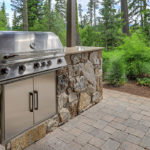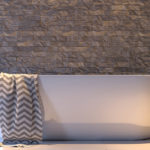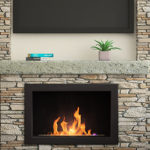Exploring Varieties of Limestone
Limestone Variety
We imagine we understand what the term “limestone” entails, but the truth is, there are far more varieties than meet the eye. Limestone faces immense variation, often based solely on the location at which it was formed.
Types of Limestone
Limestone comes in endless varieties, based on color, composition, origin, and more! Read about some of the most common types below.
Black Limestone Rock
Limestone comes in a lot of different colors, which are determined by the non-limestone materials infused into a given rock. In order to achieve black limestone, the specimen must have high levels of organic material dispersed throughout.
Chalk Limestone
Chalk limestone is soft, fine, and tends to range in color from white to light grey. It tends to be mostly composed of the skeletal remains of tiny marine animals, including microorganisms and algae, which have exteriors composed of calcium carbonate.
Coral Reef Limestone
Coral reef limestone is formed by the hot lagoons that surround coral reefs. This tropical water is filled with limestone components which solidify as water evaporates. The lime ‘mud’ – not yet stone – settled along the bottom of the sea, and slowly hardens.
Coquina Limestone
Coquina limestone can be thought of as not-quite-finished chalk limestone, composed “wholly” of fossils. This limestone is only loosely held together, and its appearance is rocky. It’s made of broken shell debris that hasn’t decomposed down to a finer substance, giving the limestone a pitted and uneven surface. While its holes and permeability make coquina a bad building material, it is ideal as reservoir rock in commercial oil and natural gas production.
Fossiliferous Limestone
Fossiliferous limestone is composed of fossils, as the name suggests. This includes shell and skeletal fossils of organisms that produced the limestone, typically of marine animals. Fossiliferous limestone may be colloquially referred to as “animal shell limestone.”
Lithographic Limestone
Lithographic limestone stands out from other types of limestone due to its density. This limestone is fine and uniform, found in thin beds that were once shallow stagnant hypersaline and anoxic lagoons. Due to high salt, low oxygen, and still water, few organisms ventured through this rock, leaving it to form near-perfect homogeneity.
Oolitic Limestone
Oolitic limestone is composed of oolites. Oolites are tiny spheres of material formed by microscopic, circle-shaped precipitation of calcium carbonate on the surface of a shell fragment or grain of sand. Ooids are spherical, layered, sedimentary grains that include calcium carbonate along with miscellaneous minerals.
Travertine Limestone
Travertine is limestone that forms via chemical precipitate, evaporating to form stalactites, stalagmites, and flowstone. This tends to occur in partially-submerged caves with environments conducive to evaporative precipitation.
Tufa Limestone
Tufa limestone refers to towers of calcium carbonate stone that form in bodies of saltwater as a result of chemical precipitate. If made only of chemical precipitate and not of organisms’ remains, coral reef limestone can form tufa towers, which are columns of the limestone built up over years. These towers can reach 30 feet, and are only revealed once a body of water is drained or dried out.
“Marble” Limestone
Many countries are home to a marble-like mixture that more technically falls under the classification of limestone. These stones are not “true marble,” but instead have components or appearances that deviate both from typical limestone and typical marble. Examples include Galala marble, Belgian marble (also known as Devonian limestone), Kilkenny marble (also known as fossiliferous Carboniferous limestone), Red Verona marble (a fossiliferous limestone), Ashford Black Marble (a Carboniferous limestone), Cotham marble (a stromatolitic limestone), Purbeck marble (a fossiliferous limestone), and Tennessee marble (a crystalline limestone). As you can see, these “marbles” tend to fall under a variety of the above categories.
Impression’s Source of Limestone
As you can see, limestone comes in many forms, which is what allows it to be such a versatile material. Impression is proud to source our limestone from Europe, which allows us to be the number one limestone fabricator in the area. Contact Impression today to upgrade your home with limestone!
View Our Stone
















